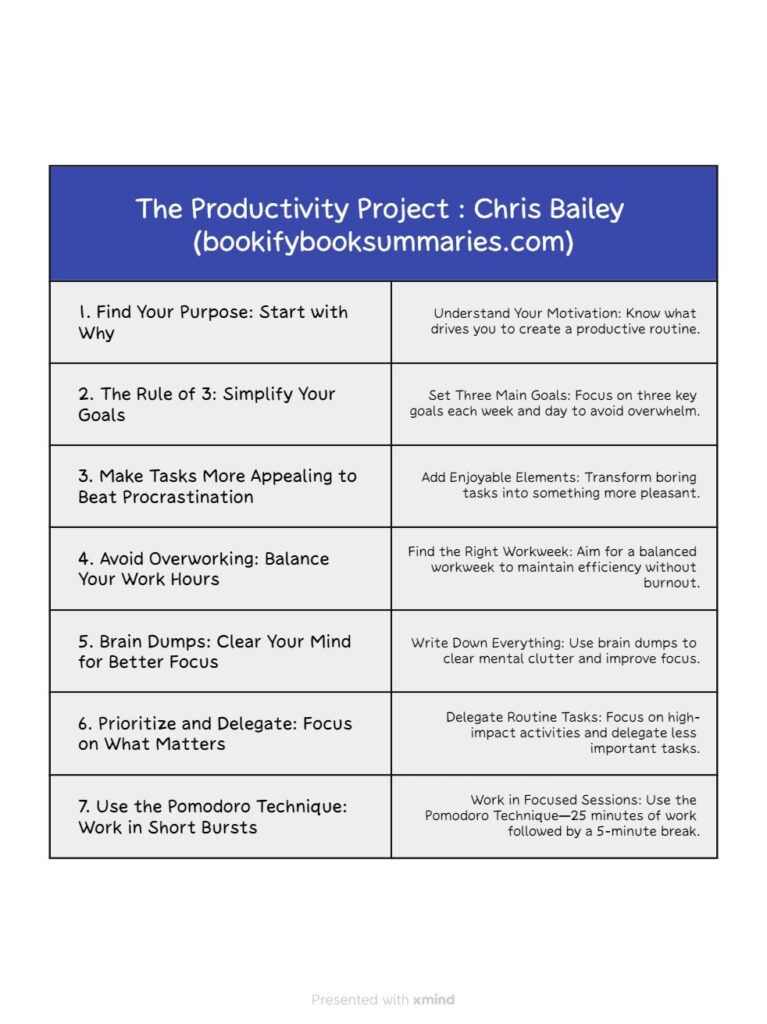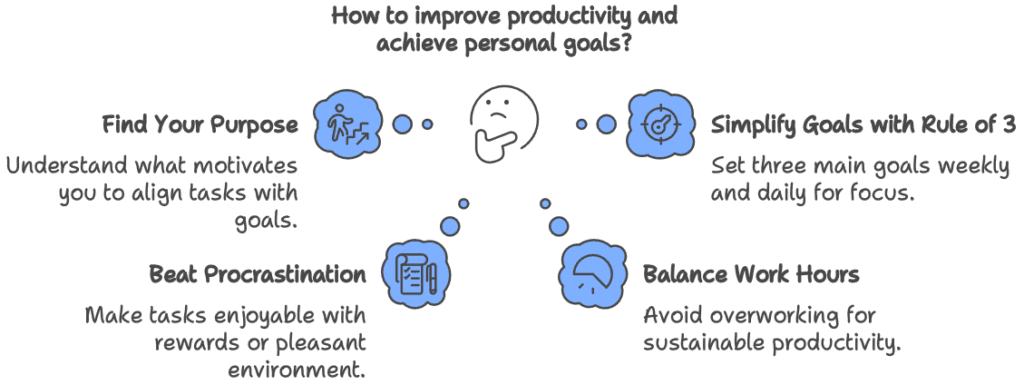
Mastering Productivity: Finding Your Balance Between the Wall Street Trader and the Buddhist Monk
Hey there! So, you’re looking to boost your productivity? Awesome choice! But let’s clear something up first—productivity isn’t just about doing more stuff. It’s actually about doing the right stuff in a smart way. Think of it like this: productivity is about managing your time, attention, and energy effectively. It’s about working smarter, not harder.
Picture this: a Wall Street trader running around like a headless chicken, glued to their screens, and a Buddhist monk moving at a snail’s pace, lost in deep contemplation. You don’t want to be either of these extremes. Instead, you’re aiming for a sweet spot right in the middle—a place where you’re both efficient and mindful.
Let’s dive into some cool techniques to help you balance your inner Wall Street trader and Buddhist monk, and become the most productive version of yourself from the book The Productivity Project
1. Find Your Purpose: Start with Why
The journey to productivity starts with understanding what really drives you. Imagine you’re setting up your daily routine without knowing why you’re doing what you’re doing. It’s like driving with a blindfold on—totally pointless!
Take a look at the story of Sarah Blakely, the founder of Spanx. Before she started her successful company, she had a clear purpose and a vision of what she wanted to achieve. She wasn’t just motivated by making money; she wanted to solve a problem she’d experienced herself. By understanding her true motivation—creating a product that made women feel confident—she was able to build a business that resonated with millions. Her clear sense of purpose helped her stay focused and driven.
So, what’s your true motivation? If you had two extra hours in your day, what would you do? Hang out with friends? Dive into a hobby? Understanding this will help you build a routine that truly fits your personal goals and makes you feel alive.
2. The Rule of 3: Simplify Your Goals
Ever set out with a plan that falls apart by lunchtime? Yup, we’ve all been there. The Rule of 3 is a lifesaver here. This technique involves setting three main goals for each week and each day. It’s all about simplicity.
Take the example of Elon Musk. When he was developing Tesla, he didn’t try to tackle every problem at once. Instead, he focused on key goals, such as improving battery technology, expanding production capabilities, and enhancing vehicle safety. By breaking down his objectives into manageable chunks, he kept his efforts focused and made significant progress.
For your own life, if your weekly goals are to finish a book chapter, update your website, and renew your passport, your daily goals could be to work on a section of the chapter, draft your next blog post, and fill out the passport form. Chris Bailey, author of The Productivity Project, found that juggling too many goals led to overwhelm. By focusing on just a few key objectives, you can keep things on track and avoid the chaos of overcommitment.
3. Make Tasks More Appealing to Beat Procrastination
Procrastination is like that sneaky gremlin that keeps you from getting stuff done. We all have tasks that make us want to hide under the bed—like tax forms or boring reports. But here’s a trick: make these tasks less of a drag.
Consider the example of Marie Kondo, the tidying expert. She turned organizing into a fun and rewarding experience by creating a method that emphasized joy and satisfaction. She made the mundane task of decluttering something people looked forward to. You can use a similar approach by making boring tasks more enjoyable. For instance, do your taxes at a café with a nice drink, or create a reward system: get through a task and then enjoy a Netflix binge. It’s all about making the task feel less like torture.
4. Avoid Overworking: Balance Your Work Hours
More hours don’t always equal more productivity. Overworking can actually drain your efficiency. Consider the example of Steve Jobs. During his time at Apple, he was known for his intense work ethic, but he also valued balance and creativity. By understanding his limits and focusing on what mattered, he was able to drive innovation without burning out.
Research shows that working more than 55 hours a week significantly drops productivity. So, don’t fall into the trap of working yourself into the ground. Balance is key. Aim for a workweek that maintains your energy and keeps you focused without burning out. Your brain and body will thank you!
5. Brain Dumps: Clear Your Mind for Better Focus
Ever feel like your brain’s on overload? That’s where brain dumps come in. It’s a simple, yet powerful technique. Just write down everything you need to do, from tasks to ideas. This clears out the mental clutter and helps you focus on solving problems and being creative.
Look at how Tim Ferriss, author of The 4-Hour Workweek, uses brain dumps. He recommends writing down everything that’s on your mind to get it out of your head and onto paper. This helps free up mental space so you can tackle challenges with a clear mind. If you’re not a fan of paper, use a note-taking app on your phone. And don’t forget—take care of small tasks as they come up to keep your mind uncluttered.
6. Prioritize and Delegate: Focus on What Matters
Not everything on your to-do list needs your personal touch. Sometimes, it’s about prioritizing what truly matters and delegating the rest. Think about Richard Branson, founder of the Virgin Group. He’s known for delegating tasks to trusted team members so he can focus on high-impact activities that drive his business forward.
For example, if you’re working on a major project at work, focus your energy there. Delegate routine tasks or ask for help with less crucial stuff. This way, you can concentrate on what’s important and maximize your productivity.
7. Use the Pomodoro Technique: Work in Short Bursts
The Pomodoro Technique is all about working in short, focused bursts. You work for 25 minutes, then take a 5-minute break. After four “Pomodoros,” you take a longer break. It helps maintain focus and prevents burnout.
Look at how the team behind the software company Trello uses this technique. They implement short, focused work sessions to keep productivity high and prevent burnout. Chris Bailey found this method helpful in his own productivity experiments. It’s great for tackling big tasks or projects without feeling overwhelmed. Set a timer, dive into your work, and enjoy those breaks—they’re key to staying productive and energized.
Infographic Summary

Read more about Productivity Here
